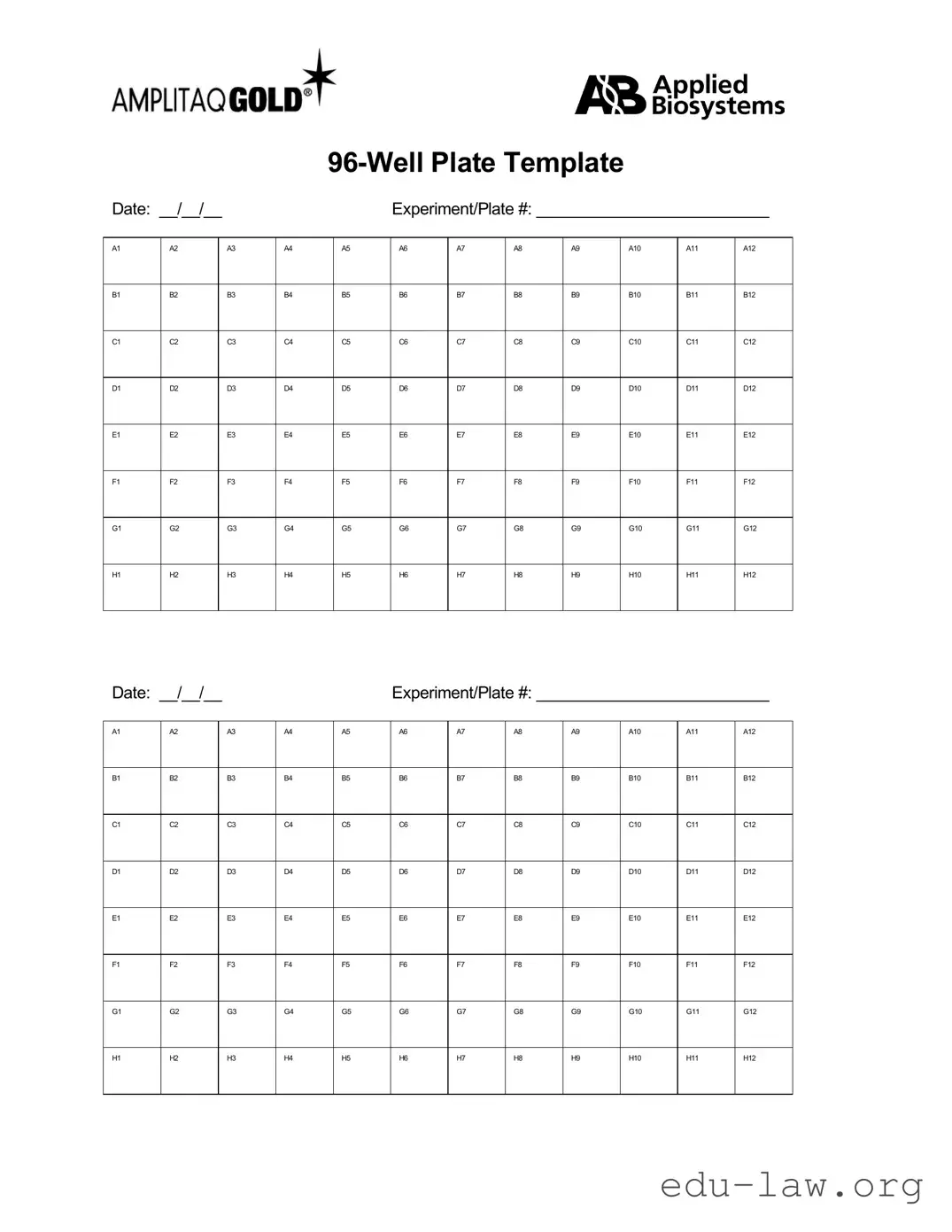What is the purpose of the 96 Well form?
The 96 Well form serves as a crucial tool for organizing and documenting experiments that take place in a 96-well plate format. Whether you're working in a laboratory setting or conducting research, this form helps streamline data collection, ensuring that all information regarding samples, reagents, and results is clearly recorded. It aids scientists and technicians in tracking their processes accurately and efficiently.
How is the 96 Well form structured?
The structure of the 96 Well form is typically organized in a grid format corresponding to the layout of a 96-well plate. Each well is designated by a specific coordinate, often labeled by letters and numbers. Parameters such as sample ID, reagent type, concentration, and experimental conditions can be documented for each well. This organized presentation helps users quickly locate and reference essential information, facilitating better collaboration and analysis.
Who should use the 96 Well form?
The 96 Well form is designed for anyone involved in laboratory experiments that utilize 96-well plates. This includes researchers, laboratory technicians, and students in various scientific fields such as biology, chemistry, and biochemistry. By maintaining clear and consistent documentation, users can ensure reproducibility in their experiments and share their findings more effectively with peers and supervisors.
Where can I find the 96 Well form?
The 96 Well form can often be obtained from your institution's laboratory resources or shared drive. Additionally, it may be available online through various scientific websites or platforms that focus on laboratory protocols. If you need a specific template, consider reaching out to colleagues or checking academic resources, as they may provide standard or customizable versions of the form for your needs.

